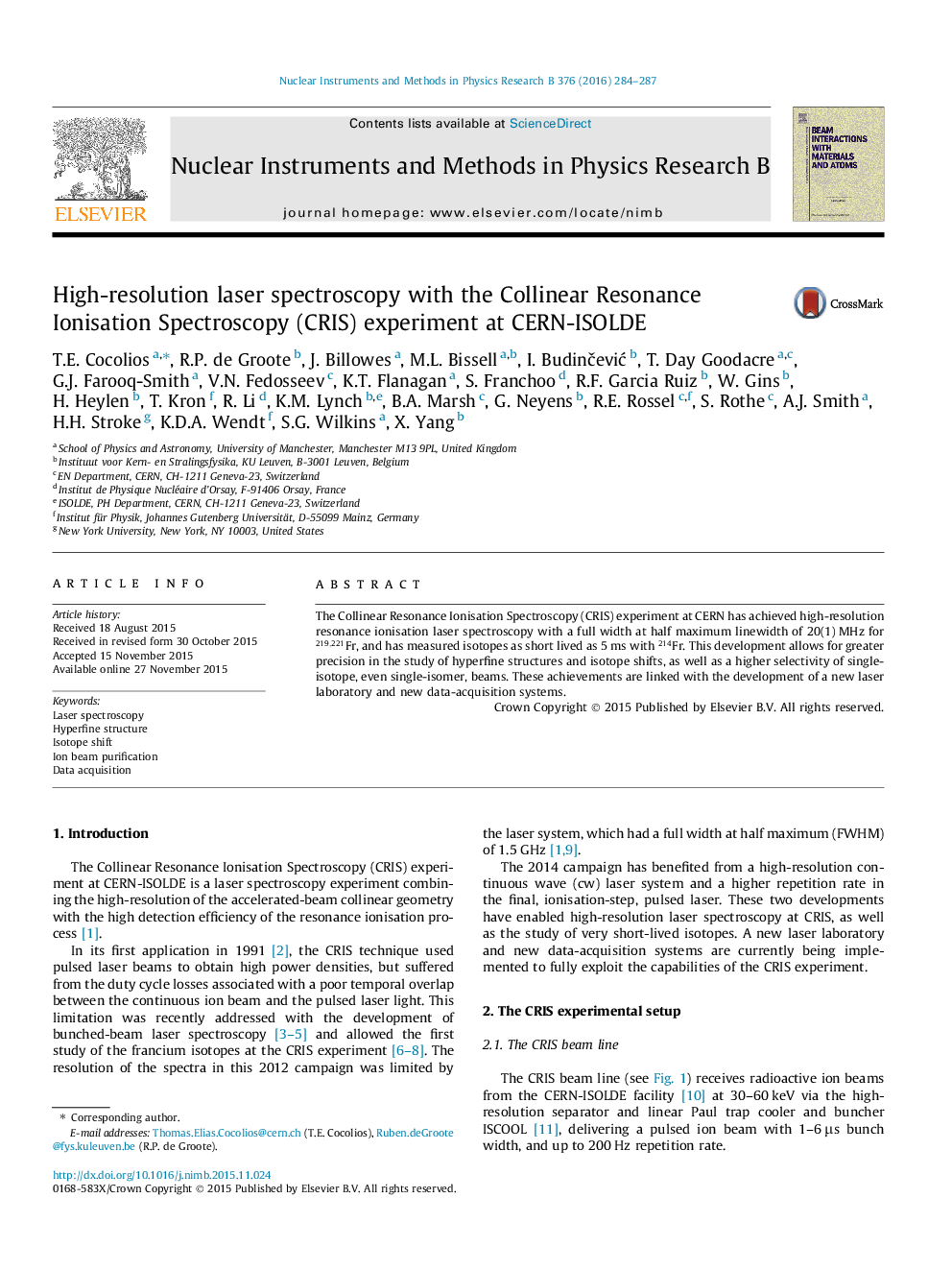| Article ID | Journal | Published Year | Pages | File Type |
|---|---|---|---|---|
| 8039825 | Nuclear Instruments and Methods in Physics Research Section B: Beam Interactions with Materials and Atoms | 2016 | 4 Pages |
Abstract
The Collinear Resonance Ionisation Spectroscopy (CRIS) experiment at CERN has achieved high-resolution resonance ionisation laser spectroscopy with a full width at half maximum linewidth of 20(1)Â MHz for 219,221Fr, and has measured isotopes as short lived as 5Â ms with 214Fr. This development allows for greater precision in the study of hyperfine structures and isotope shifts, as well as a higher selectivity of single-isotope, even single-isomer, beams. These achievements are linked with the development of a new laser laboratory and new data-acquisition systems.
Related Topics
Physical Sciences and Engineering
Materials Science
Surfaces, Coatings and Films
Authors
T.E. Cocolios, R.P. de Groote, J. Billowes, M.L. Bissell, I. BudinÄeviÄ, T. Day Goodacre, G.J. Farooq-Smith, V.N. Fedosseev, K.T. Flanagan, S. Franchoo, R.F. Garcia Ruiz, W. Gins, H. Heylen, T. Kron, R. Li, K.M. Lynch, B.A. Marsh, G. Neyens, X. Yang,
